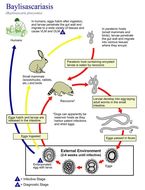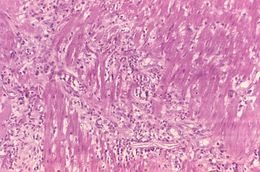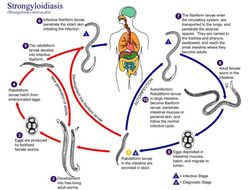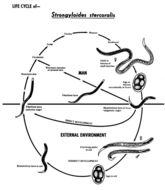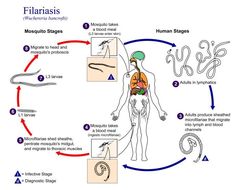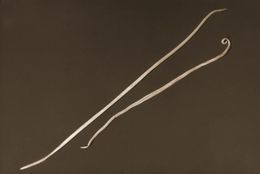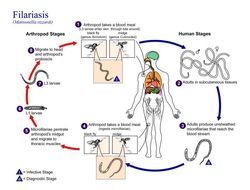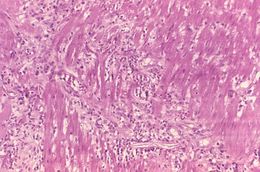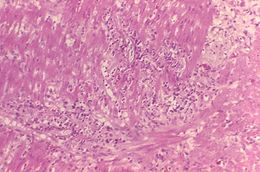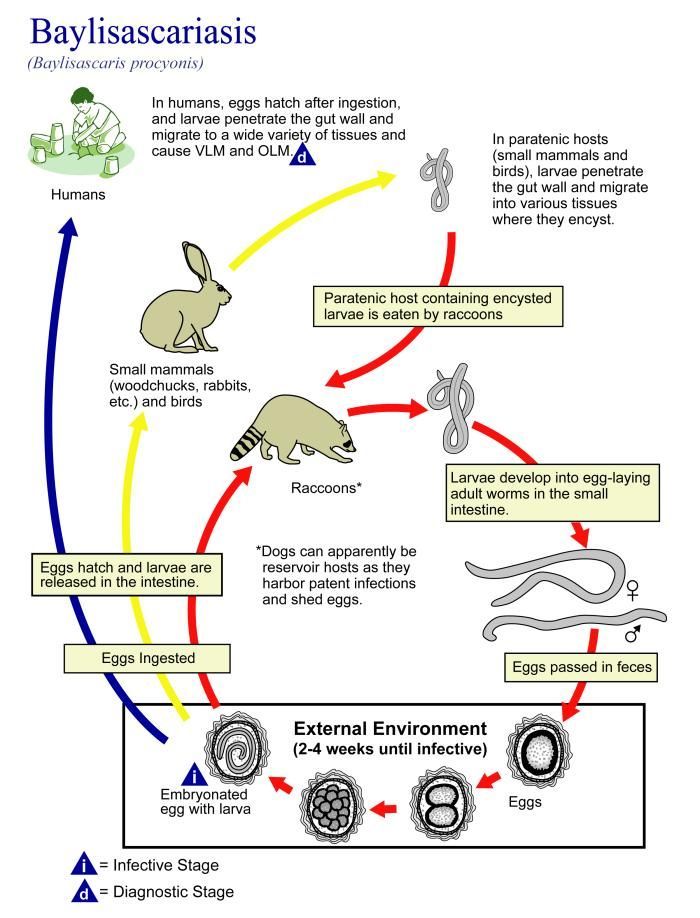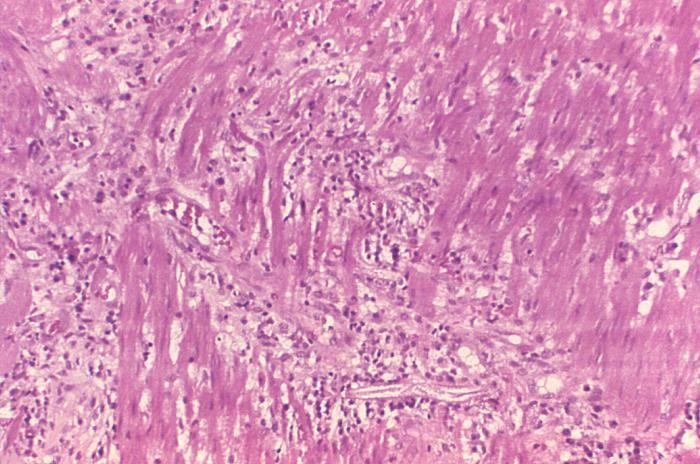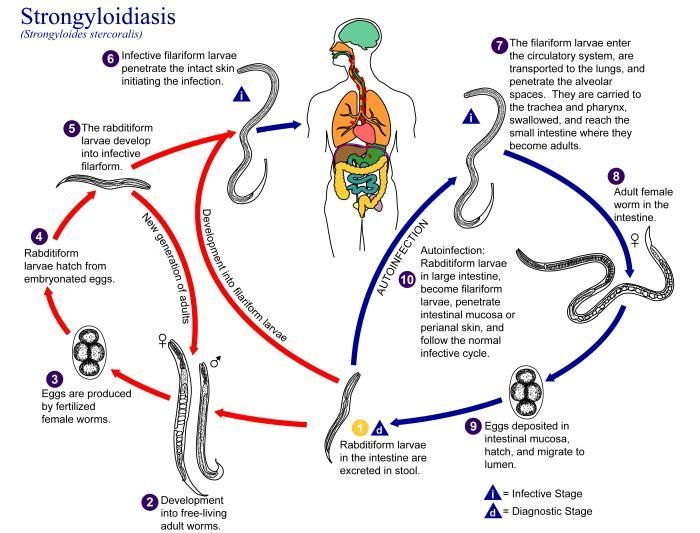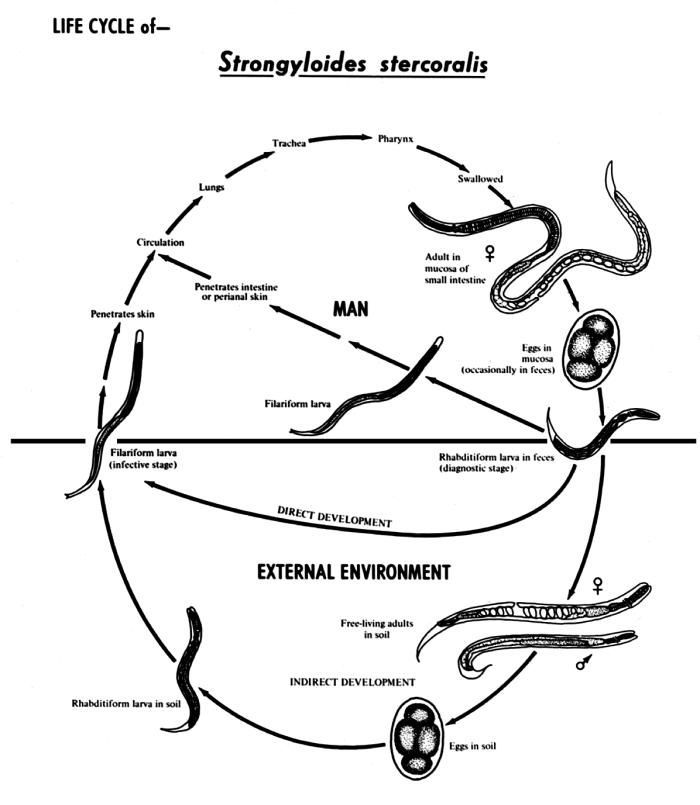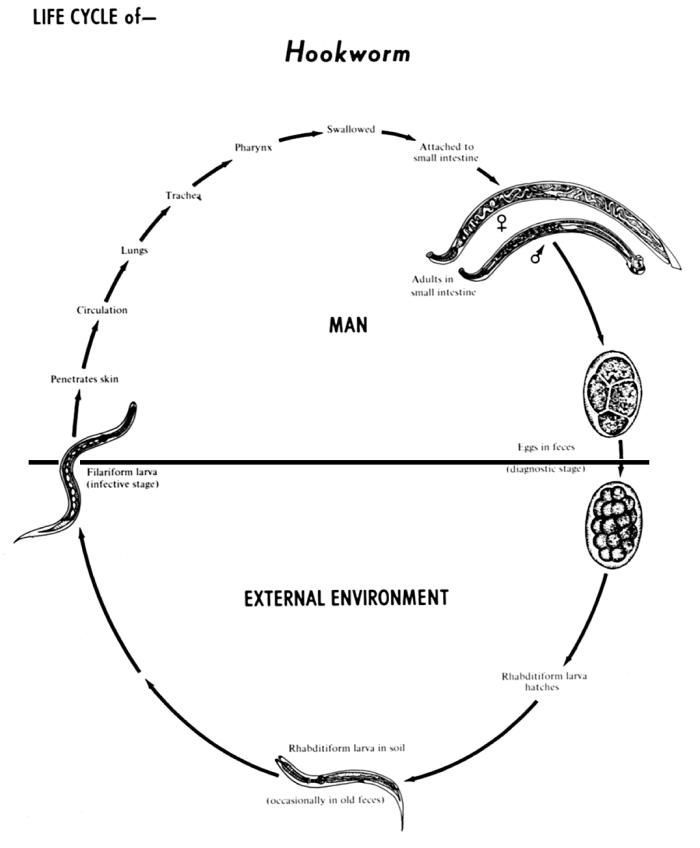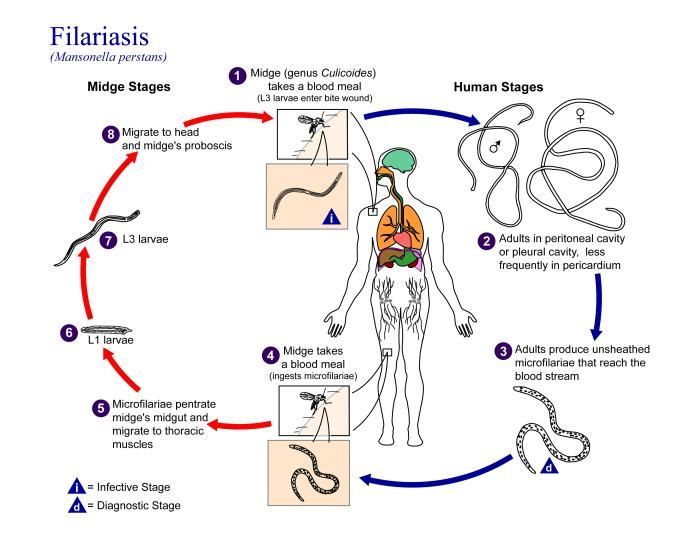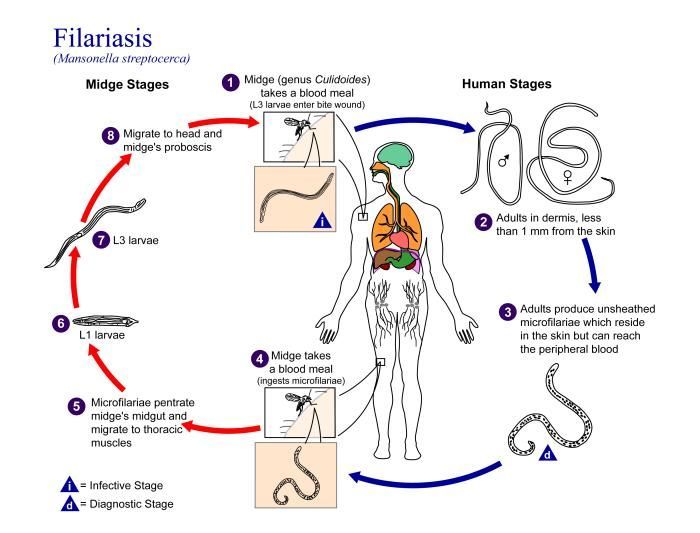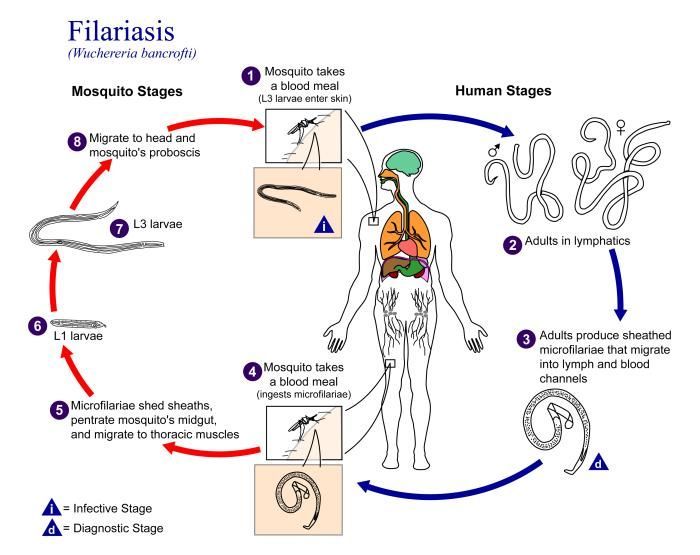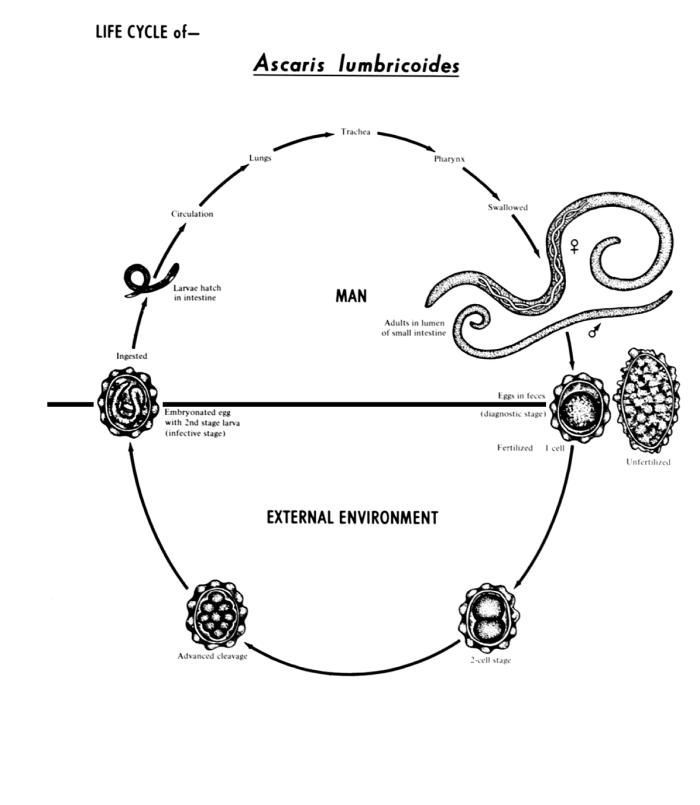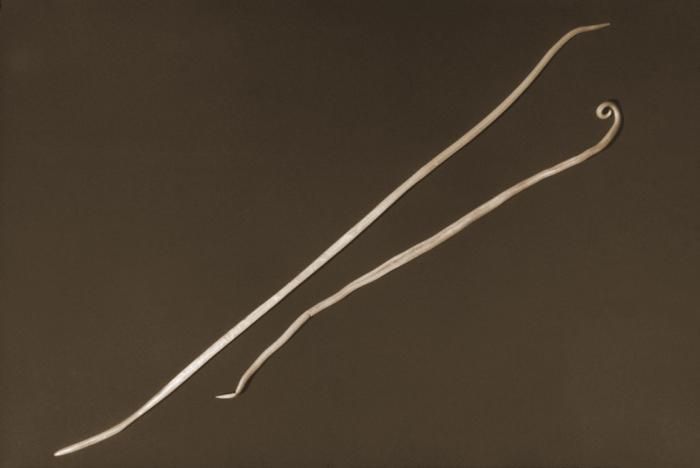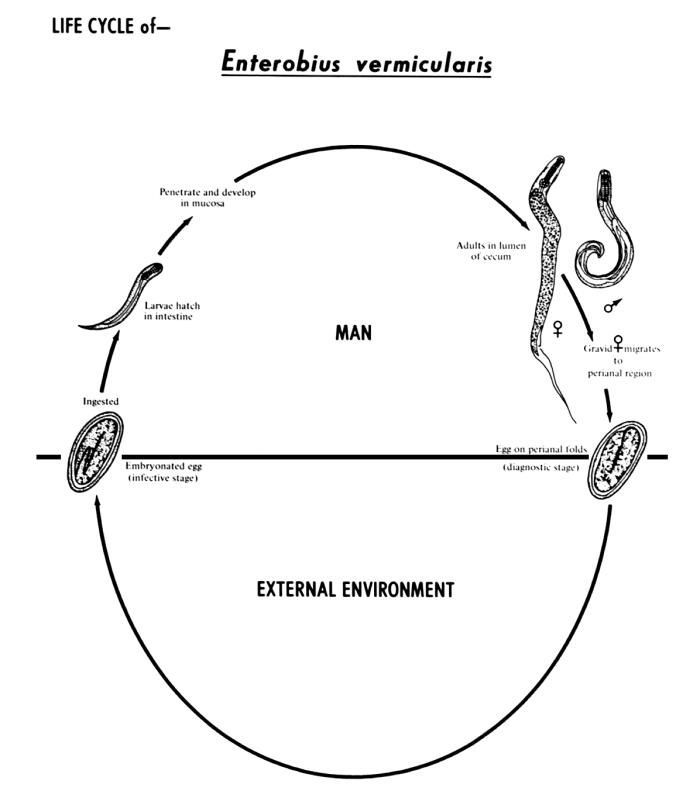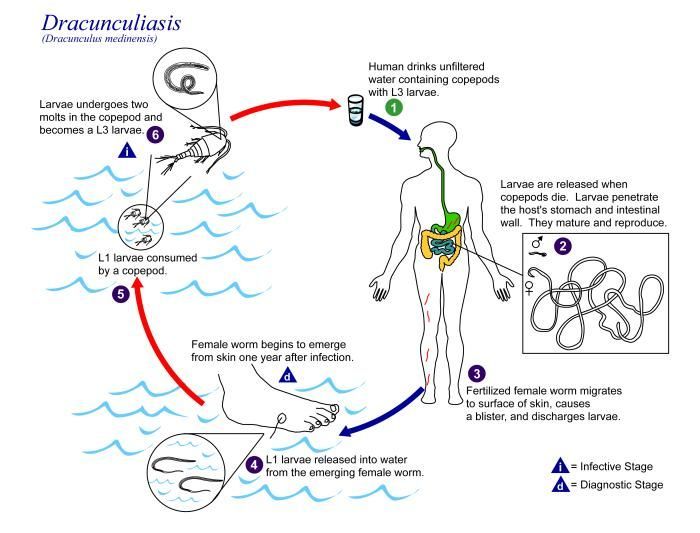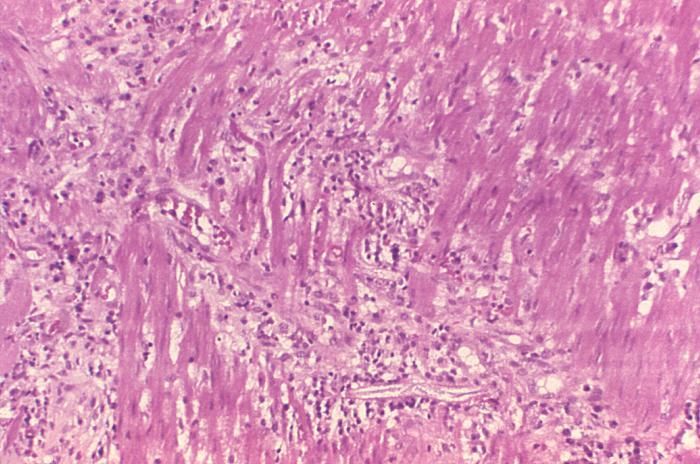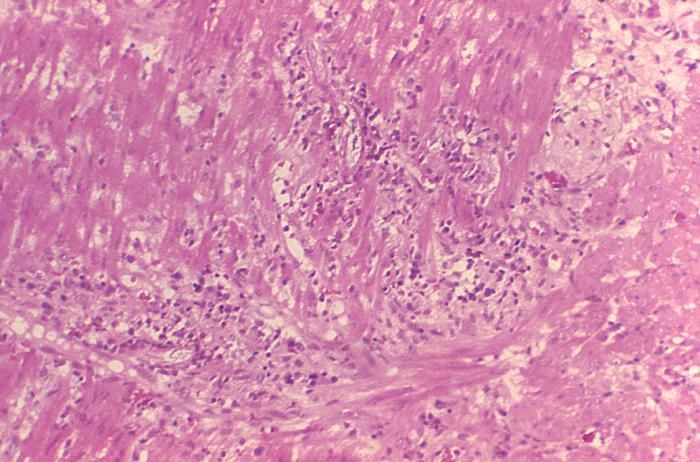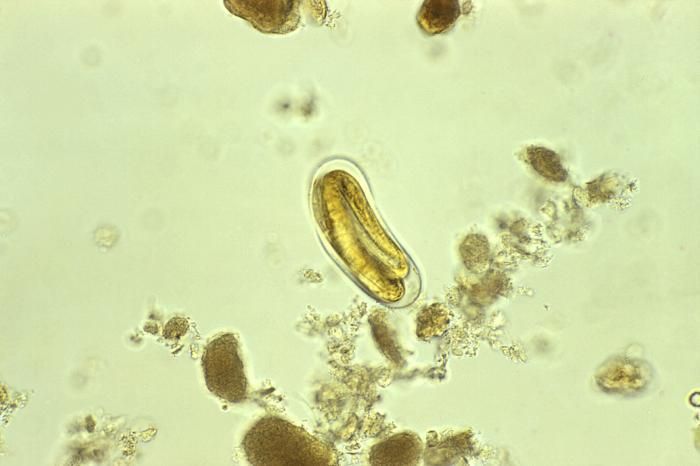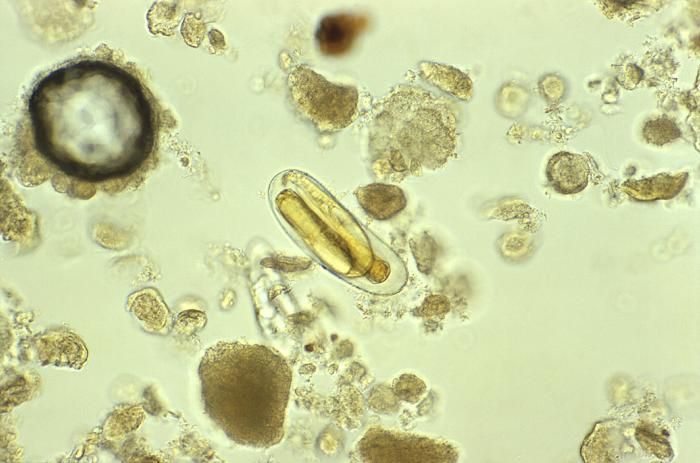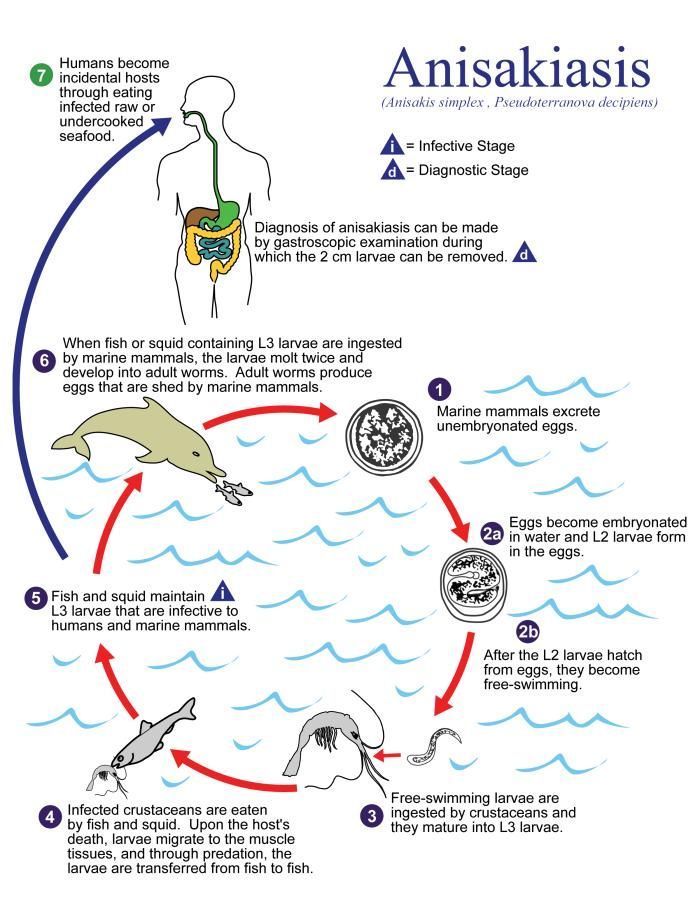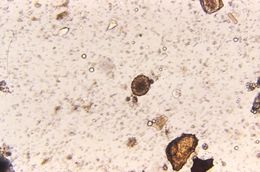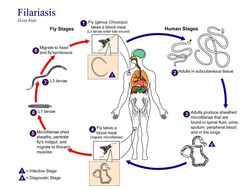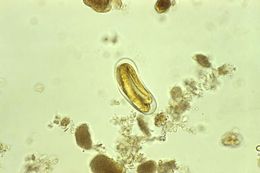-
Figure 2.Longior longior Morffe & García sp. n. (female). A Esophageal region B Cephalic end C Tail, ventral view D Vulva E Egg F Genital tract G Entire nematode, lateral view.
-
Figure 3.Longior longior Morffe & Garcíasp. n. (male). A Entire nematode, lateral view B Esophageal region, lateral view C Cephalic end D Tail, lateral view.
-
Figure 5. Longior longior Morffe & García sp. n. (female). A Cephalic end B Egg. Longior longior Morffe & García sp. n. (male) C Cephalic end D Tail, lateral view E Pre-cloacal median mammiform papilla, lateral view F Post-cloacal dorso-lateral papilla. Longior similis Morffe, García & Ventosa, 2009 (male) G Cephalic end H Tail, lateral view. Scale bars: A, B, C, D, G, H. 0.05 mm. E, F. 0.020 mm.
-
Magnified 125X, this photomicrograph revealed the presence of a fertile Ascaris sp. egg that was found in an unstained formalin-preserved stool sample. See PHIL 411 for an example of an unfertilized Ascaris lumbricoides egg.Geographic Distribution:The most common human helminthic infection, Ascaris sp. have a worldwide distribution. Their highest prevalence is in tropical and subtropical regions, and areas with inadequate sanitation. Ascariasis occurs in rural areas of the southeastern United States.Created: 1973
-
This illustration depicts the life cycle of Baylisascaris procyonis, the causal agent of Baylisascariasis.Created: 2002
-
This photomicrograph reveals histopathologic changes indicative of the presence of the intestinal parasitic nematode (roundworm), Strongyloides stercoralis.Clinical Features:Frequently asymptomatic. Gastrointestinal symptoms include abdominal pain and diarrhea. Pulmonary symptoms (including Loefflers syndrome) can occur during pulmonary migration of the filariform larvae. Dermatologic manifestations include urticarial rashes in the buttocks and waist areas. Disseminated strongyloidiasis occurs in immunosuppressed patients, can present with abdominal pain, distension, shock, pulmonary and neurologic complications and septicemia, and is potentially fatal. Blood eosinophilia is generally present during the acute and chronic stages, but may be absent with dissemination.Created: 1972
-
This is an illustration of the life cycle of Strongyloides stercoralis, the causal agent of Strongyloidiasis.Created: 2002
-
This diagram depicts the various stages in the life cycle of the Strongyloides stercoralis nematode.Created: 1982
-
The human hookworms include two nematode (roundworm) species, Ancylostoma duodenale and Necator americanus.Created: 1982
-
This is an illustration of the life cycle of Mansonella perstans, one of the causal agents of Filariasis.Created: 2002
-
This is an illustration of the life cycle of Mansonella streptocerca, one of the causal agents of Filariasis.Created: 2002
-
This is an illustration of the life cycle of Wuchereria bancrofti, one the causal agents of Filariasis.Created: 2003
-
This is an illustration of the life cycle of Loa loa, one of the causal agents of Filariasis.Created: 2003
-
This diagram depicts the various stages in the life cycle of the intestinal roundworm nematode Ascaris lumbricoides.Created: 1982
-
Depicted in this 1960 photograph were two Ascaris lumbricoides nematods, i.e., roundworms. The larger of the two was the female of the species, while the normally smaller male was on the right. Adult female worms can grow over 12 inches in length.Created: 1960
-
This 2007 photograph depicted Center for Disease Control/ NCZVED/DPD laboratory technician, Henry Bishop holding a mass of Ascaris lumbricoides worms, which had been passed by a child in Kenya, Africa. This nematode parasitizes the human small intestine, and is spread from human to human by the fecal-oral route. Children seem to be infected more often than adults, and though the organisms depicted here originated in Africa, the disease can be acquired in the southeastern United States.Created: 2007
-
This is an illustration of the life cycle of Mansonella ozzardi, one of the causal agents of Filariasis.Created: 2002
-
This diagram depicts the various stages in the life cycle of the human pinworm nematode Enterobius vermicularis.Created: 1982
-
This is an illustration of the life cycle of Dracunculus medinensis, the causal agent of Dracunculiasis.Created: 2002
-
This photomicrograph reveals histopathologic changes indicative of the presence of the intestinal parasitic nematode (roundworm), Strongyloides stercoralis.Clinical Features:Frequently asymptomatic. Gastrointestinal symptoms include abdominal pain and diarrhea. Pulmonary symptoms (including Loefflers syndrome) can occur during pulmonary migration of the filariform larvae. Dermatologic manifestations include urticarial rashes in the buttocks and waist areas. Disseminated strongyloidiasis occurs in immunosuppressed patients, can present with abdominal pain, distension, shock, pulmonary and neurologic complications and septicemia, and is potentially fatal. Blood eosinophilia is generally present during the acute and chronic stages, but may be absent with dissemination.Created: 1972
-
This photomicrograph reveals histopathologic changes indicative of the presence of the intestinal parasitic nematode (roundworm), Strongyloides stercoralis.Clinical Features:Frequently asymptomatic. Gastrointestinal symptoms include abdominal pain and diarrhea. Pulmonary symptoms (including Loefflers syndrome) can occur during pulmonary migration of the filariform larvae. Dermatologic manifestations include urticarial rashes in the buttocks and waist areas. Disseminated strongyloidiasis occurs in immunosuppressed patients, can present with abdominal pain, distension, shock, pulmonary and neurologic complications and septicemia, and is potentially fatal. Blood eosinophilia is generally present during the acute and chronic stages, but may be absent with dissemination.Created: 1972
-
Magnified 240X, this photomicrograph revealed the presence of a Heterodera sp. nematode egg.Created: 1974
-
Magnified 240X, this photomicrograph revealed the presence of a Heterodera sp. nematode egg.Created: 1974
-
This illustration depicts the life cycle of A. simplex and P. decipiens, the causal agents of Anisakiasis.Created: 2002


